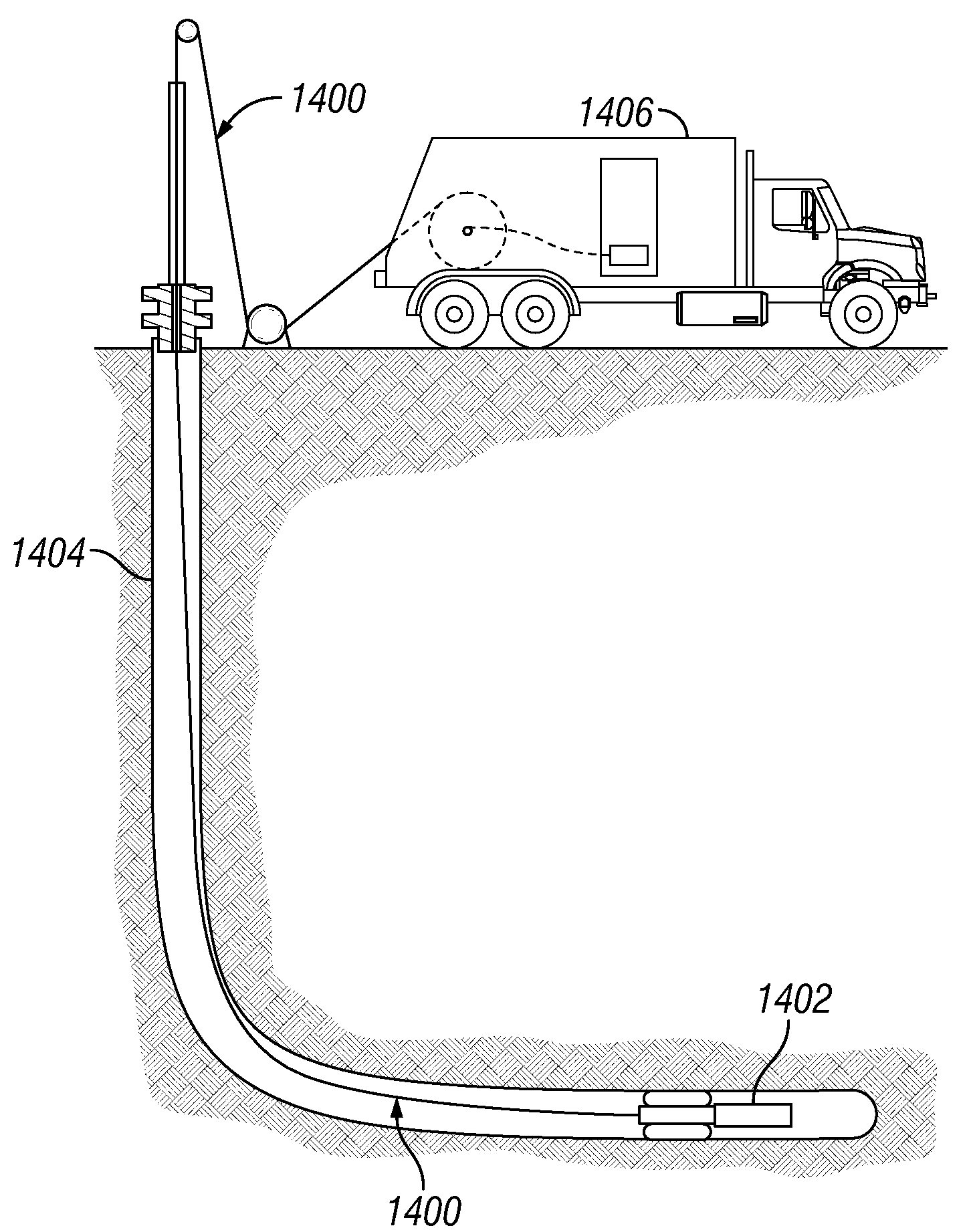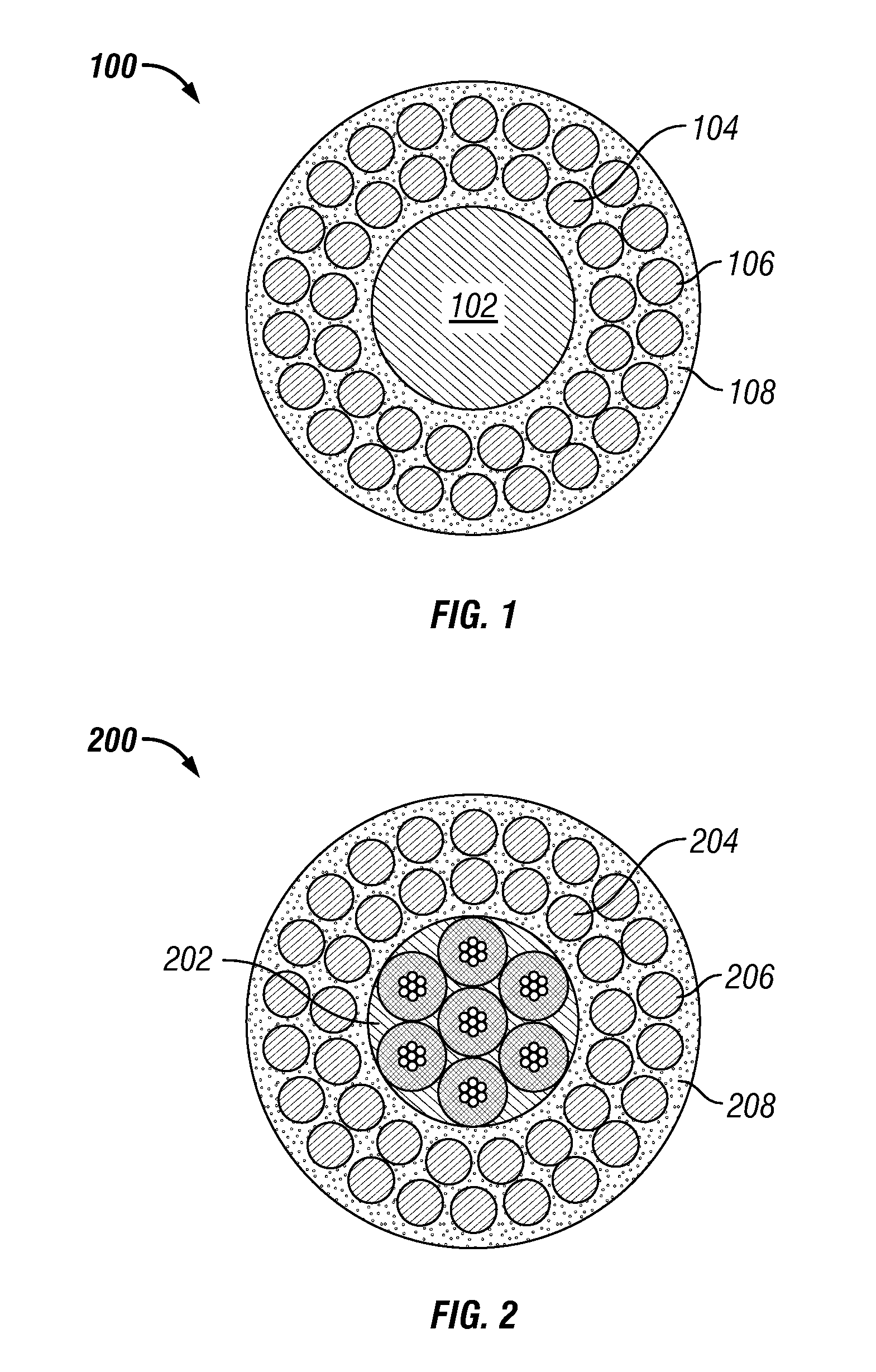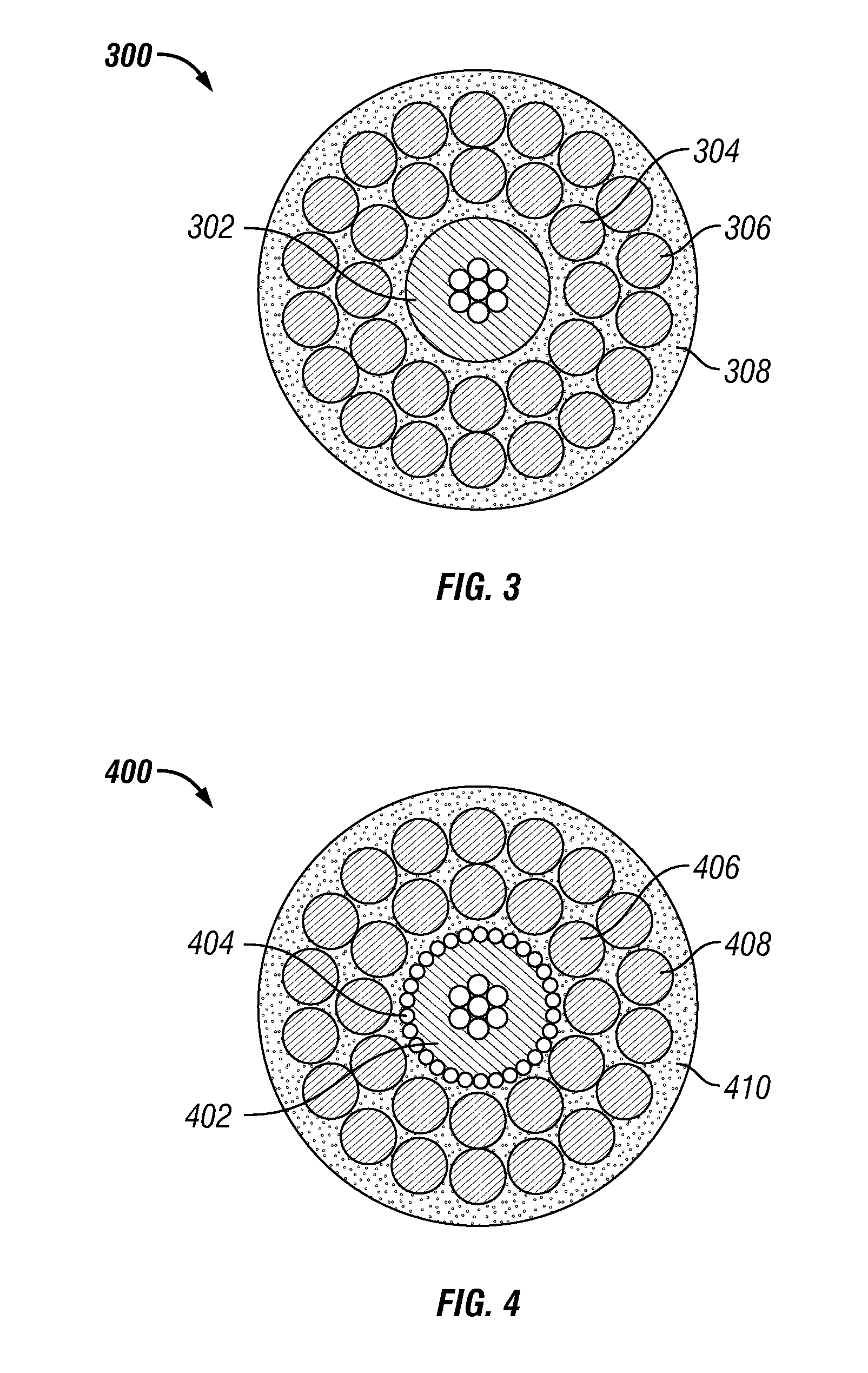Methods of Using Enhanced Wellbore Electrical Cables
a technology wellbore cables, which is applied in the direction of insulated conductors, borehole/well accessories, survey, etc., can solve the problems of corrosion and failure of armor wires, limited useful life of wellbore electric cables, and difficulty in removing oil or gas trapped therein, so as to minimize related equipment, the effect of eliminating the need for grease-packed flow tubes
- Summary
- Abstract
- Description
- Claims
- Application Information
AI Technical Summary
Benefits of technology
Problems solved by technology
Method used
Image
Examples
Embodiment Construction
[0044]Illustrative embodiments are described below. In the interest of clarity, not all features of an actual implementation are described in this specification. It will of course be appreciated that in the development of any such actual embodiment, numerous implementation-specific decisions must be made to achieve the developer's specific goals, such as compliance with system related and business related constraints, which will vary from one implementation to another. Moreover, it will be appreciated that such a development effort might be complex and time consuming but would nevertheless be a routine undertaking for those of ordinary skill in the art having the benefit of this disclosure.
[0045]Embodiments of the invention relate to wellbore cables as well as uses thereof. In one aspect, the invention relates to an enhanced electrical cables used with devices to analyze geologic formations adjacent a wellbore, methods of manufacturing the same, and uses of the cables in seismic and...
PUM
 Login to View More
Login to View More Abstract
Description
Claims
Application Information
 Login to View More
Login to View More - R&D
- Intellectual Property
- Life Sciences
- Materials
- Tech Scout
- Unparalleled Data Quality
- Higher Quality Content
- 60% Fewer Hallucinations
Browse by: Latest US Patents, China's latest patents, Technical Efficacy Thesaurus, Application Domain, Technology Topic, Popular Technical Reports.
© 2025 PatSnap. All rights reserved.Legal|Privacy policy|Modern Slavery Act Transparency Statement|Sitemap|About US| Contact US: help@patsnap.com



